Build a GraphQL API with Python, Flask and Ariadne
Time to read:
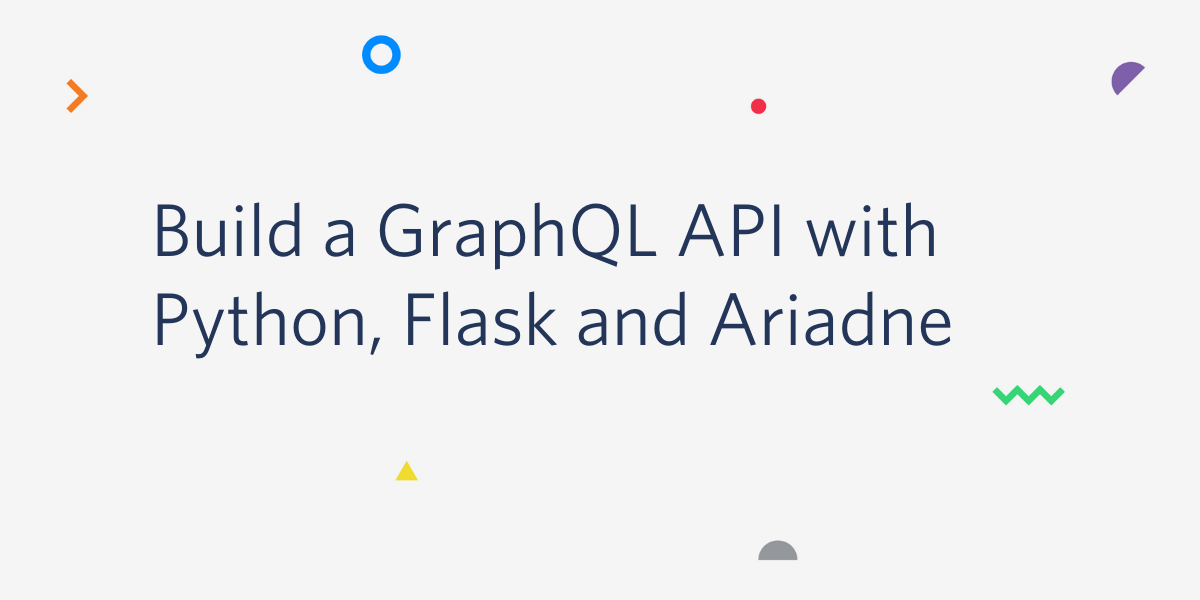
You have probably come across the term GraphQL but do you know what is it? Rest easy (pun not intended), as you will learn about it shortly.
GraphQL is a query language for APIs and a server-side runtime that allows clients to request only the data that they need from APIs. GraphQL is meant to be a more efficient and flexible alternative to REST.
GraphQL was developed and used internally at Facebook and was open-sourced in 2015. It has since gained popularity with more and more developers and companies jumping on the GraphQL bandwagon, building supporting tools and GraphQL APIs. One of the most popular is the Github GraphQL API. GraphQL is language agnostic which means that we can build GraphQL APIs in Python, JavaScript, Java, Scala and many more programming languages.
GraphQL vs. REST
With REST, we model our API as resources, provide endpoints to access particular resources and define which HTTP methods are allowed on a given endpoint.
With GraphQL, we model our API as a graph, with the types defined in the schema being the nodes. Our clients then make queries to a single endpoint to get data at the particular “nodes”.
For example, a Todo REST API would expose an endpoint like /api/todos/<id> where id is the id of the Todo item on the database. The endpoint would support the methods GET, PUT, DELETE and PATCH to allow fetching and manipulating an item. We would also have another endpoint for fetching all the items and creating new ones, maybe /api/todos.
A Todo GraphQL API, on the other hand, would expose an endpoint like /api/graphql and clients would send different queries to that endpoint to get what they want. A query to fetch all todos would look like this:
A query to fetch a single todo with an id of 2 would look like:
The query above tells the server to return the id, description, completed, and dueDate fields of a Todo item with id of 2. If the client was only interested in the id and description, the query would say so as follows:
See how much flexibility the client has in requesting only the data that it needs?
If you have been curious about GraphQL but haven’t yet got your hands dirty building a GraphQL server in Python yet, worry not. By the end of this tutorial, you will have a GraphQL API using Flask and Ariadne. Our API will help us manage todo lists and it will be capable of the following:
- Create new items
- List all items
- Mark an item as done
- Change the due date of an item
- Delete an item
Requirements
The only requirement you need to complete this tutorial is Python 3.6 or higher. If you don’t have it installed, get it here.
Create a Python virtual environment
We will install several Python packages for our project. A virtual environment will come in handy as it will give us an isolated Python environment for our project. Let’s go ahead and create one.
Create a directory called todo_api and navigate to it.
Create the virtual environment:
If you are using a Mac or Unix computer, activate the virtual environment as follows:
To activate the virtual environment on Windows, use the following command:
We will now install the packages below:
- Flask: A simple framework for building web servers in Python
- Ariadne: A library for using GraphQL applications
- Flask-SQLAlchemy: An extension for Flask that makes it easier to use SQLAlchemy (an ORM) within a Flask application. SQLAlchemy allows us to interact with SQL databases using Python.
Let’s go ahead and install them:
Introduction to GraphQL
GraphQL is a query language for APIs and a server-side runtime that allows clients to request only the data that they need. We build a GraphQL service by: defining the types of data and operations allowed on that data (schema) and functions for the fields on the data types.
GraphQL has its own language, the GraphQL Schema Definition Language (SDL), which is used to write GraphQL schemas.
We can define a Todo type using the SDL as follows:
The ! after a type indicates that the field is non-nullable, or in other words, that it must always have a value.
Fetching data
When working with REST, we usually fetch data by making HTTP GET requests to various endpoints. GraphQL works a little differently. We have a single endpoint, from where the client can request all the data that it needs. The client does this by posting a query.
A query to get all the Todo items can look as follows:
Creating and modifying data
Most applications also need a way to modify data. We create, update and delete data in GraphQL using mutations. We write mutations similar to how we write queries but we use the keyword mutation. A mutation for creating a Todo would look as follows:
This mutation accepts two strings: a description and a due date and returns a Todo object.
Learn more about queries and mutations here.
Writing our GraphQL schema
Now that we are more familiar with the GraphQL SDL, let’s write the schema for our “ToDo” application. Inside the todo_api directory, create a new file called schema.graphql and add the following schema to it:
We defined a few things in our schema:
- A
Todotype to represent an item in our to-do list - Queries to fetch a single and all items
- Mutations to create and delete
Todoitems, mark an item as done and update its due date. - The return values of the queries and mutations include the corresponding data items plus two extra fields:
successanderrors. These fields will tell the client whether a query or mutation executed successfully and provide error messages when there was a failure.
Choosing a Python library to implement a GraphQL server
We will build our API using Ariadne, which is a popular Python library for building GraphQL servers. Ariadne is a schema-first library, which means that the schema written in the SDL is the ultimate source of truth.
This is unlike a code-first approach, where code is the source of truth and the schema is derived from it. Both approaches have their pros and cons and you can read more about the differences here. Graphene is another popular GraphQL library for Python that uses the code-first approach.
Creating a Flask project
Now that we have already defined our schema, let’s implement it and put together our GraphQL API.
The code for our api will live inside a package called api. Inside todo_api, create a directory called api and inside it create a file called __init__.py. Add the code below to api/__init__.py to create a simple Flask server that returns the word Hello!:
In the project root, create another file called main.py and update it as follows:
The directory structure should look as follows:
Now we need to tell Flask where to find the app application instance. We do that by setting the environment variable FLASK_APP to the name of the top-level Python file that has the app, which in our case is main.py. Set it as follows:
If you are using Windows, replace export in the command above with set.
Start the Flask server by running the following command:
Visit http://127.0.0.1:5000 in your web browser to confirm that the server is running and that everything is working correctly.
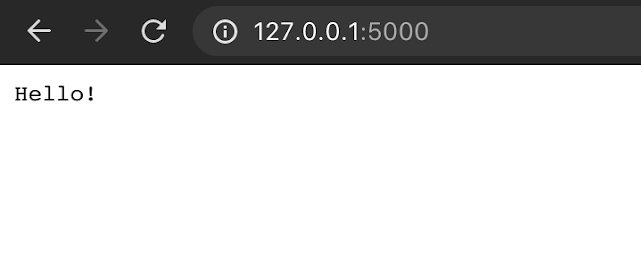
Adding the database
Since we want to be able to view our to-do items any time we want, we will store them in a database so that they can be preserved. We will go with sqlite because it’s lightweight and is simple enough to get started with. To manage this database from the Flask application we are going to use the Flask-SQLAlchemy extension.
Let’s go ahead and configure our database. Add the configuration to the api/__init__.py file:
The SQLALCHEMY_DATABASE_URI setting tells Flask-SQLAlchemy where the database file is located. In our case, we will store it in the project directory with the name todo.db.
Setting SQLALCHEMY_TRACK_MODIFICATIONS to False disables tracking modifications of objects and sending signals to the application for every database change. It is a useful feature but can cause memory overhead, so it should only be used when necessary.
Creating the Model
Our database will have one table, called Todo, where we will store our to-do items. SQLAlchemy makes it possible to create database tables by defining them as Python classes, with columns given as class variables. Awesome, right? We call them database models. Let’s define our Todo model.
Create a new file called models.py inside the api package and define the Todo model as shown below:
Our Todo table will have columns called id, description, completed and due_date. The id column will be auto-generated. The description column will accept strings. The completed column will store a boolean and will default to False. The due_date column will store dates. We also added a nifty method called to_dict which will provide a dictionary representation of a Todo item. This will come in handy when we start writing mutations and queries.
The models file needs to be imported into the application. Edit your main.py file so that it looks as follows:
Create some Todos
Fire up the terminal and start the python prompt by running the Python interpreter:
Create the database table as follows:
Next, create your first to-do item and save it to the database:
Queries and Mutations
After creating a GraphQL schema, we need to create functions (resolvers) that return values for the different fields defined in it. Inside api, create two files called queries.py and mutations.py.
Writing the todos query
We defined a query called todos in our GraphQL schema:
This query returns a dictionary with the keys success, errors and todos. The success field is set to True if there are no errors. In the case of a problem, success is set to False and errors includes the list of errors that occurred during execution. The todos field contains the list of Todo items. As mentioned above, the ! means that this query is non-nullable, so it must always return a result.
Let us write a resolver to fetch all the Todo items. Add the following to api/queries.py:
A resolver function accepts two positional arguments, obj and info. obj is a value returned by a parent resolver, which in this case will be the root resolver. info contains any context information that the GraphQL server provided the resolver during execution. This data can include authentication information or an HTTP request.
Inside the resolver, we query the Todo table for all the items, convert them to Python dictionaries and add them to the response payload with the key todos. If there are any errors during execution, we return them in the key errors inside the response payload and also set success to False.
Binding a resolver
Once we write a resolver, we need to tell Ariadne which field it corresponds to from the schema, so we need to bind the resolve_todos function to the field todos in our GraphQL schema.
Add the following at the bottom of main.py:
Don’t worry about the imports for now, we will get to them shortly.
We have imported ObjectType, which is initialized with the name of the type defined in the Schema. In our case, we have initialized ObjectType with Query since we are binding our resolver to a Query type. The set_field method binds the todos field of the query to our resolver function.
The load_schema_from_path function takes the name of a schema file. This function validates the schema and returns a string representation of it.
The make_executable_schema function takes the type_defs variable with the string representation of our schema and the query resolver we just created.
The snake_case_fallback_resolvers comes in handy because of the differences in how we write Python code and JavaScript code. In Python, we normally name variables and functions in “snake_case”, while “camelCase” is preferred in JavaScript. Most GraphQL schemas you come across will use the JavaScript convention to name the fields (including the one we wrote). snake_case_fallback_resolvers converts a field name to snake case before looking it up on the returned object.
Exploring our API
Ariadne ships with GraphQL Playground, which is a graphical user interface that we can run to test our queries interactively. Let’s set that up so that we can begin testing our queries.
Add the following routes at the bottom of main.py:
Start the Flask server with:
Visit 127.0.0.1:5000/graphql and if everything is setup correctly, you should see the page below:
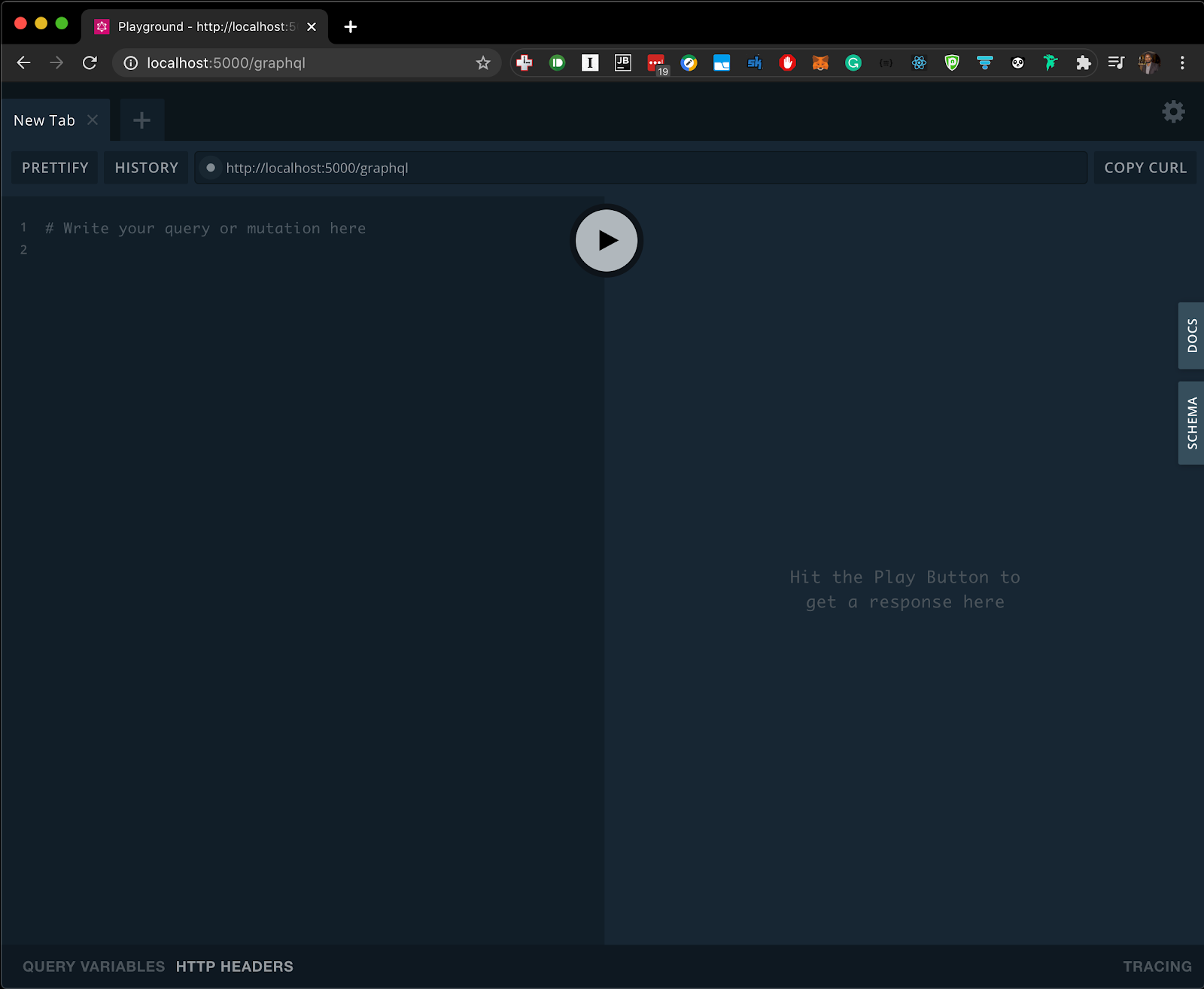
Let’s write our first query. Paste the query below in the editor on the left side of the page:
We have named our query fetchAllTodos and requested for the fields id, completed, dueDate and description from the query todos.
Hit the play button to the right of the editor and you should see the list of todos. If successful, you should see your results on the right similar to this:
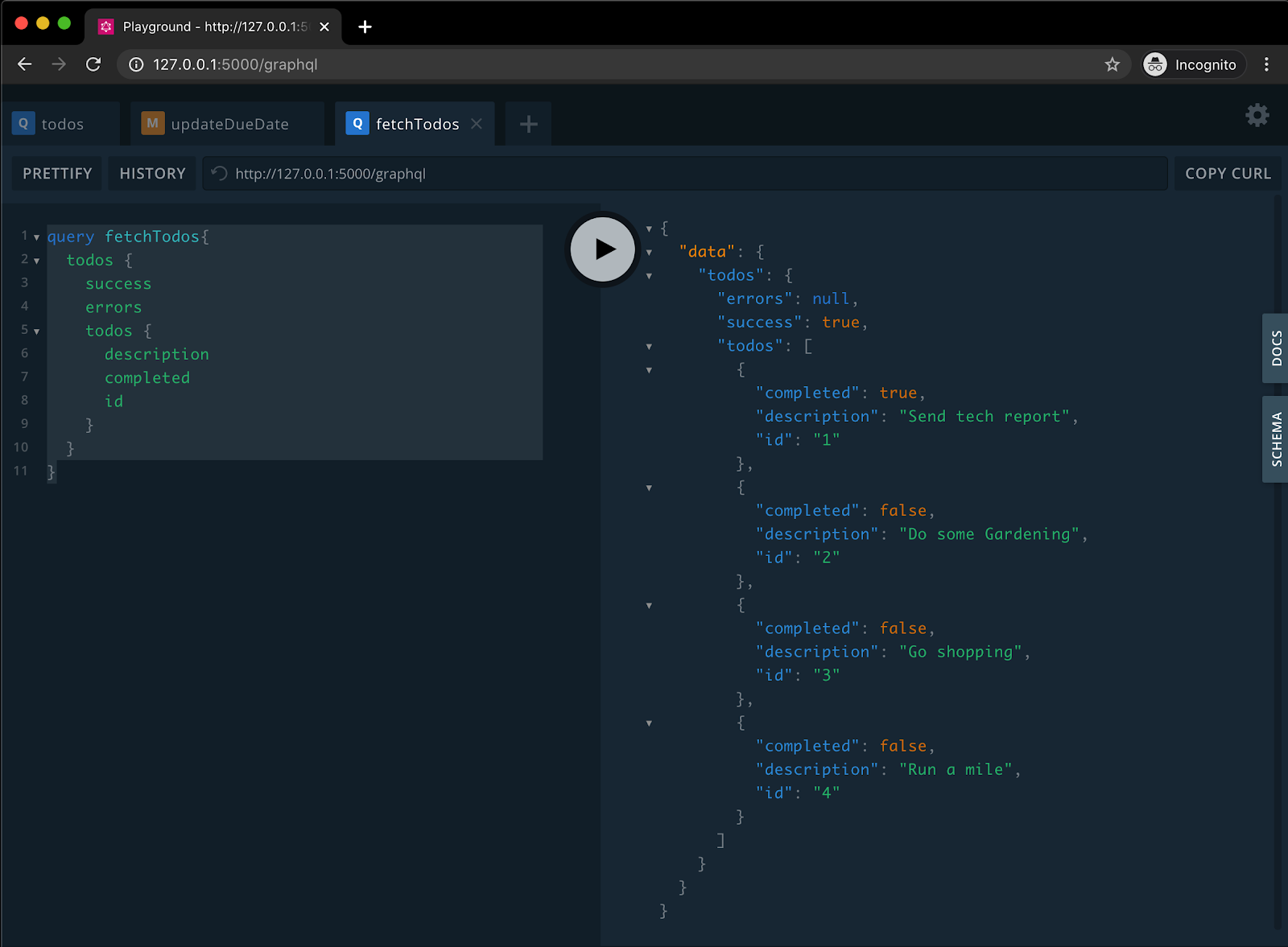
Fetching a single item
To fetch a single Todo item, we will need to write a special kind of resolver; one that takes arguments.
Here is a sample query that fetches the item with id of 1:
Paste it on the GraphQL Playground and see how when we execute it we get an obscure response that includes some error messages, among them one that reads “Cannot return null for non-nullable field Query.todo.” This happens because we haven’t written a resolver to resolve the todo field of the schema. The response to this query would be null, but because we have used the ! to mark this query as non-nullable, Ariadne returns an error.
Let’s update api/queries.py to add our second resolver:
Next add the code to bind the resolver to main.py:
Now restart the Flask server and then run the query above once again and you should get back the Todo item matching the given id.
Note that we decorated our resolver with convert_kwargs_to_snake_case. This is because the argument is passed in as todoId on the query, but the corresponding argument on the resolver is named todo_id. We could define our resolver as def resolve_todo(obj, info, todoId), but to avoid having to mix snake case and camel case we use the convert_kwargs_to_snake_case decorator to convert the incoming arguments to snake case.
The implementation of the resolver queries the Todo table for the Todo item with the given id and adds it to the response using the key todo and the key success is set to True. If there are any errors during execution, they are included in the errors key on the response payload and the key success on the response is set to False.
Mutations
We write a mutation resolver in a similar way to how we have written the query resolvers above. The mutation resolver function takes in the obj and info arguments and any other arguments that are defined in the schema.
Let’s write our first mutation. As defined in the schema, our createTodo mutation takes two arguments: description and dueDate. Add the code below to api/mutations.py:
First, we decorate our resolver to convert the incoming arguments to snake case. The due_date argument is going to be passed as a string with the format dd-mm-yyyy, so we convert it to a date object using the striptime function.
We finally create a Todo object with the arguments given and persist it to the database. If there was an error parsing the date string, the striptime function throws a ValueError and we return an error message prompting the user to provide a date in the format dd-mm-yyyy.
Let’s bind the mutation resolver. To do this we need to update main.py. To help you make these changes correctly, below you can see the first few lines of this file modified to include the mutation. Keep the two Flask routes after these lines.
Restart the Flask server and then try the following mutation in the playground:
The server should return the result below:
Let’s now add a resolver for the markDone mutation. Add the code below to api/mutations.py:
Here we accept a todo_id argument which we use to query for the particular Todo item, and then set its completed field to True.
To make the mutation available on the GraphQL server, let’s bind it as follows in main.py:
To test it, send a mutation to the server such as this one:
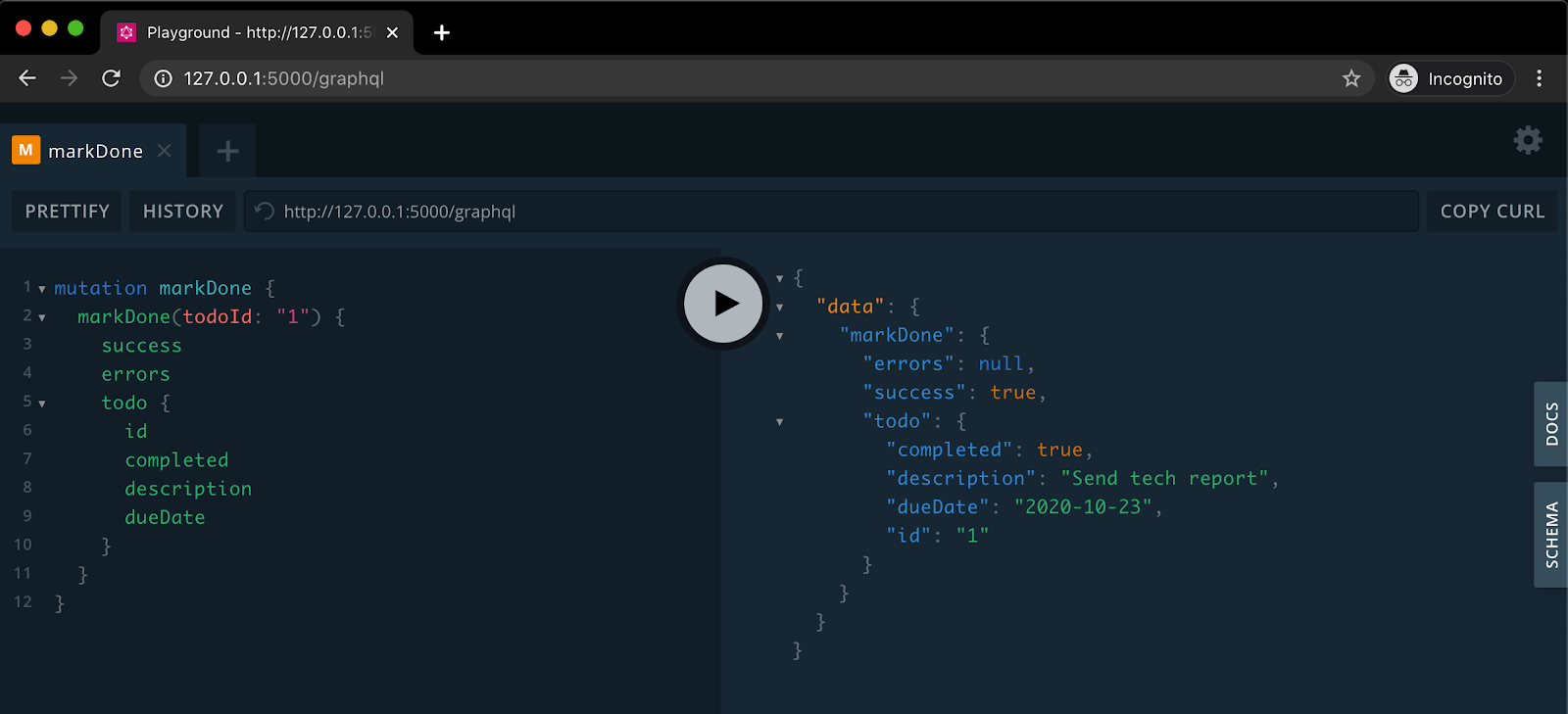
Next we want to be able to delete items from the database. Go ahead and add one more mutation to api/mutations.py:
This resolver function accepts a todo_id, queries the database for our Todo item and then deletes it if it exists. This one returns a success value with the type boolean, denoting whether the requested Todo was deleted or not and an errors value which is a list of any errors that happened during execution.
Let’s go ahead and bind our resolver as follows in main.py:
To test it, send a mutation like the following to the server:
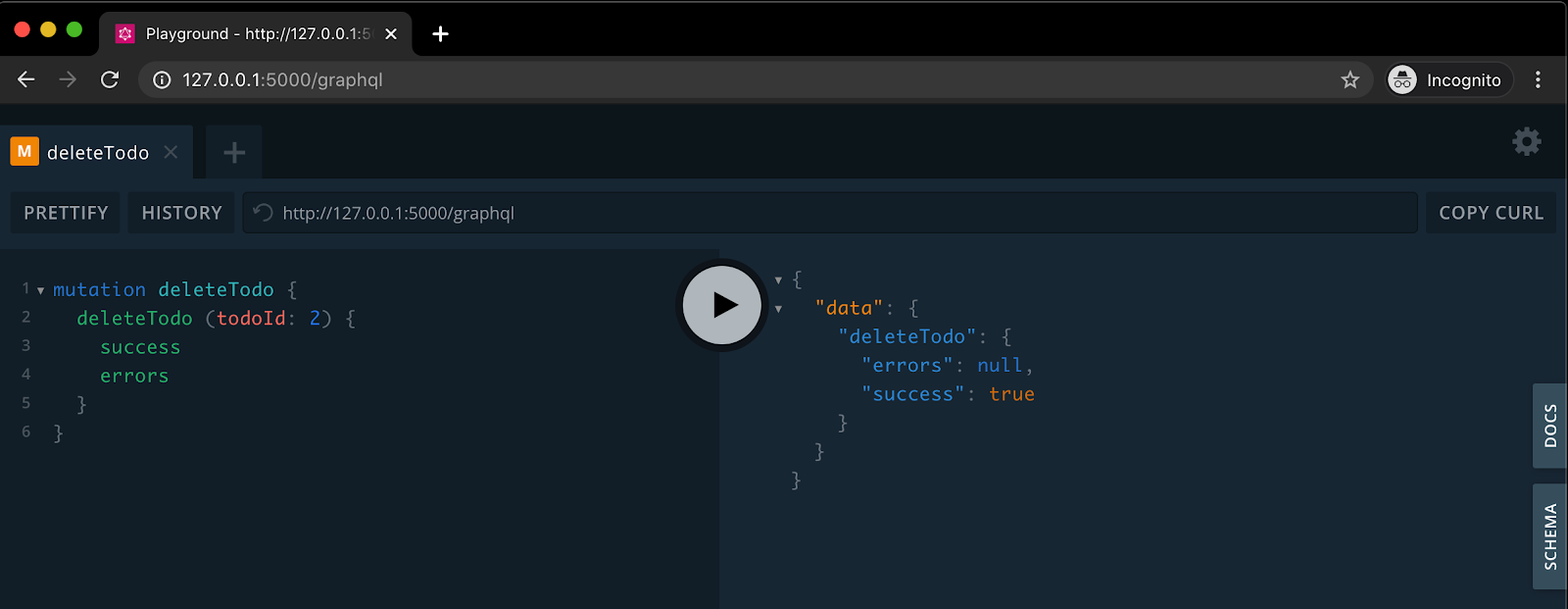
It’s possible our users will want to change the due date of an item. We will do that through the last of our mutations, which is called updateDueDate. Let’s add a resolver for this mutation in api/mutations.py:
This mutation takes two arguments, todoId and newDate, which are passed on to our resolver as todo_id and new_date respectively after they are converted to snake case.
The new_date argument is a string in the format dd-mm-yyyy. As we did before, the string is converted to a datetime.date object which is set as the due_date field on the Todo object with the requested id. If the requested Todo item was not found or there was an error parsing the date string, we add a descriptive error message and add it to the response under the key errors
Like all other resolvers, let’s go ahead and bind it as follows in main.py:
Test the mutation on the server with the following example:
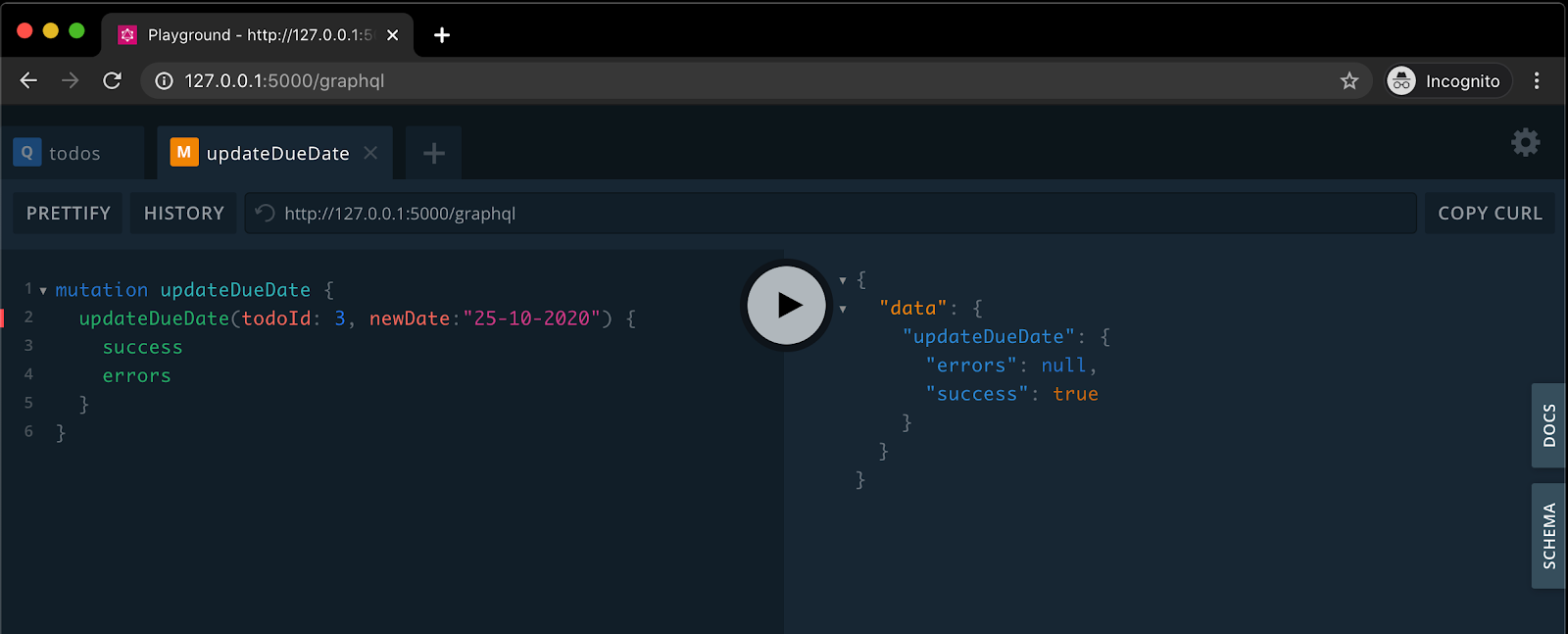
Conclusion
Congratulations for completing this tutorial, you have now built a basic GraphQL server using Flask and Ariadne!
We covered queries, mutations, writing a schema and implementing resolvers. GraphQL defines a third operation besides queries and mutations called subscriptions, which allow a server to send real time updates to subscribed clients each time new data is available, usually via WebSocket. Learning GraphQL puts you next to all these companies who are already using it.
Learn more about GraphQL best practices here.
Alex is a developer and technical writer. He enjoys building web APIs and backend systems.
Related Posts
Related Resources
Twilio Docs
From APIs to SDKs to sample apps
API reference documentation, SDKs, helper libraries, quickstarts, and tutorials for your language and platform.
Resource Center
The latest ebooks, industry reports, and webinars
Learn from customer engagement experts to improve your own communication.
Ahoy
Twilio's developer community hub
Best practices, code samples, and inspiration to build communications and digital engagement experiences.


